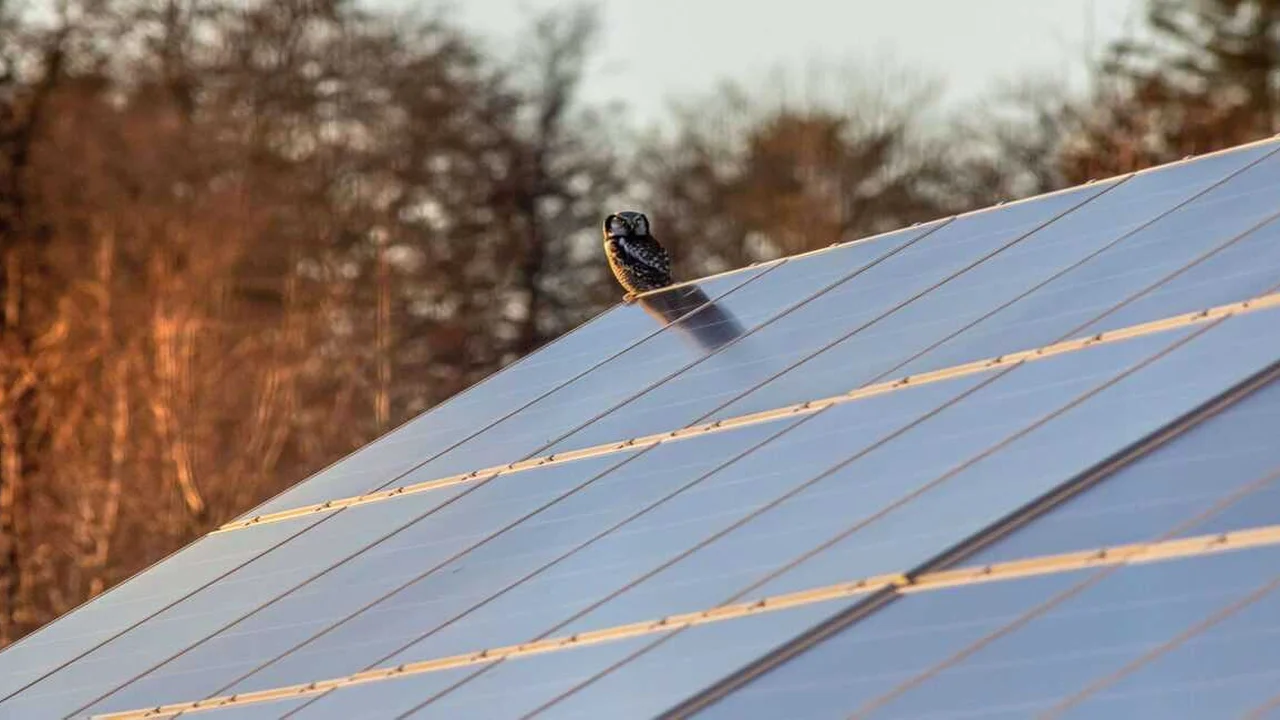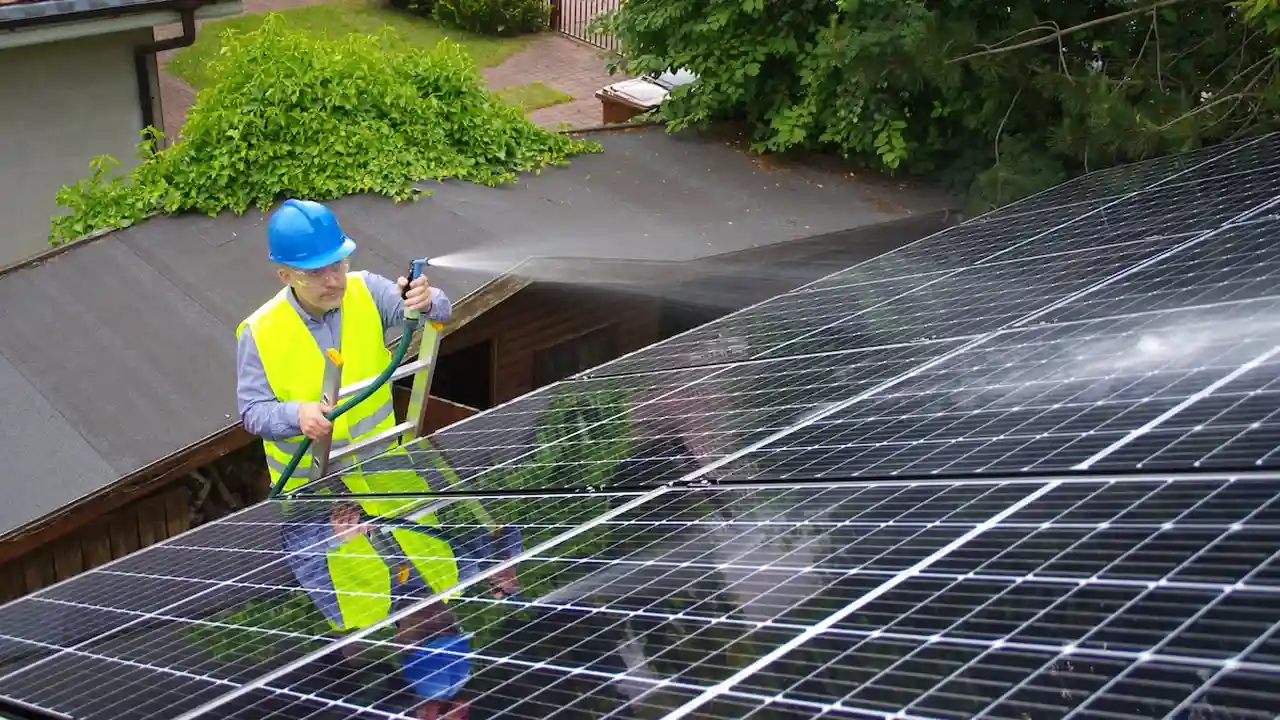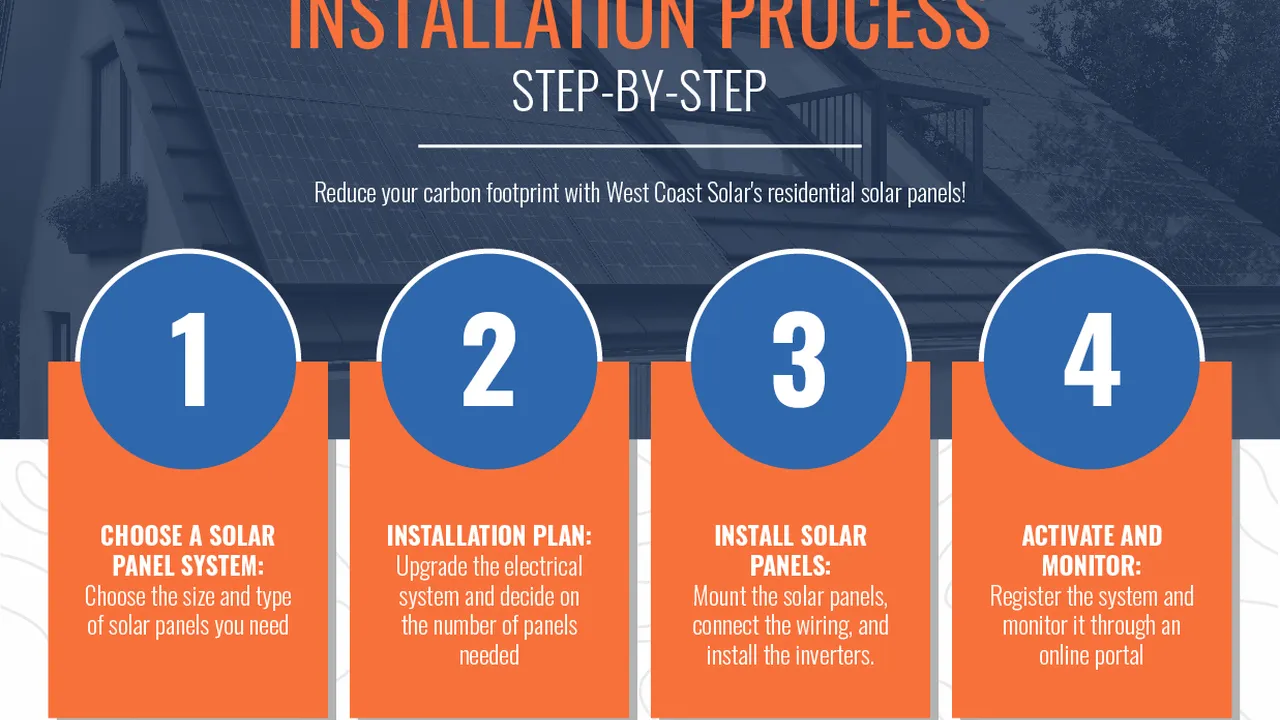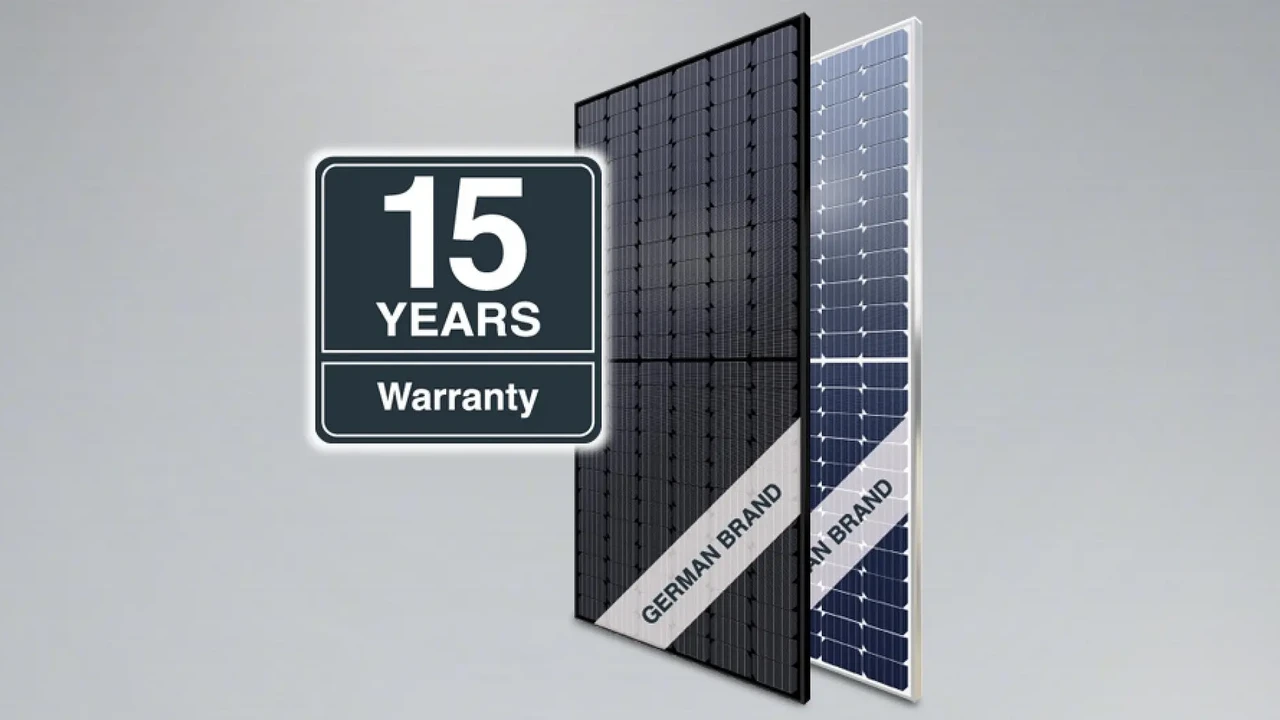Solar Panel Myths Debunked: Separating Fact from Fiction

Introduction: Unveiling the Truth About Solar Power (Solar Panel Basics)
So, you're thinking about going solar? Awesome! But before you jump in, let's clear up some of the crazy myths floating around about solar panels. Seriously, some of them are wild! We're gonna bust these myths wide open and give you the straight scoop on solar power, from how it works to what kind of savings you can expect. Get ready to separate fact from fiction and become a solar power pro!
Myth 1: Solar Panels Only Work When the Sun is Shining (Solar Panel Efficiency and Sunlight)
Okay, this is a big one. While it’s true that solar panels generate the most electricity on sunny days, they absolutely still work on cloudy days! The amount of energy produced is reduced, sure, but they're not completely useless. Think of it like this: you can still see on a cloudy day, right? Solar panels are similar. They absorb diffused sunlight, which means even when the sun is hiding behind clouds, they're still soaking up energy. The efficiency of a solar panel is affected by cloud cover, temperature, and the angle of the sun. Modern panels are designed to perform well even in less-than-ideal conditions. Plus, if you're connected to the grid, you can pull power from the grid when your panels aren't producing enough.
Myth 2: Solar Panels are Too Expensive (Solar Panel Cost and ROI)
Alright, let's talk money. Upfront costs can seem daunting, but hear me out! Solar panel prices have plummeted in recent years, making them more affordable than ever. Plus, there are tons of incentives and rebates available from the government and local utilities to help offset the initial investment. Think federal tax credits, state rebates, and even net metering programs where you get paid for the excess energy your panels send back to the grid! Beyond the initial cost, you'll be saving money on your electricity bill every month. Over time, the savings add up, and your solar panel system will pay for itself. It’s all about the Return on Investment (ROI). Consider it a long-term investment in your home and the environment.
Myth 3: Solar Panels Require Constant Maintenance (Solar Panel Maintenance and Cleaning)
Nope! Solar panels are surprisingly low-maintenance. Most systems are designed to be self-cleaning, meaning rainwater will wash away any dirt or debris that accumulates on the surface. In areas with heavy snow or lots of dust, you might need to give them a gentle cleaning once or twice a year. But that's it! The panels themselves are incredibly durable and typically come with a 25-year warranty. The inverter, which converts DC electricity to AC electricity, might need to be replaced after 10-15 years, but that's a relatively minor expense compared to the overall lifespan of the system.
Myth 4: Solar Panels Will Damage My Roof (Solar Panel Installation and Roof Integrity)
This is a valid concern, but a qualified solar installer will take every precaution to protect your roof. They'll use specialized mounting systems that are designed to distribute the weight of the panels evenly and prevent leaks. Before installation, they'll also inspect your roof to ensure it's in good condition and can handle the extra weight. If your roof is old or damaged, they might recommend repairs or replacement before installing the panels. A professional installation actually can *protect* your roof from the elements, extending its lifespan!
Myth 5: Solar Panels are Ugly and Will Decrease My Home's Value (Solar Panel Aesthetics and Home Value)
Beauty is in the eye of the beholder, right? But modern solar panels are much sleeker and more aesthetically pleasing than the clunky panels of the past. They come in various colors and styles, and some can even be integrated directly into your roof tiles. Plus, studies have shown that solar panels can actually increase your home's value! Buyers are increasingly interested in energy-efficient homes, and solar panels are a major selling point. They demonstrate a commitment to sustainability and lower energy costs, making your home more attractive to potential buyers.
Myth 6: I Need a South-Facing Roof for Solar Panels to Work (Solar Panel Orientation and Angle)
While a south-facing roof is ideal for maximizing solar energy production in the Northern Hemisphere, it's not the only option. East- and west-facing roofs can also be viable, especially with the advancements in solar panel technology. Solar installers can use software to calculate the optimal angle and orientation for your panels based on your location and roof configuration. They can even use ground-mounted systems if your roof isn't suitable. The key is to work with a qualified installer who can assess your specific situation and design a system that meets your energy needs.
Myth 7: Solar Panels are Bad for the Environment (Solar Panel Manufacturing and Environmental Impact)
Okay, let’s be real: manufacturing *anything* has an environmental impact. But solar panels are ultimately a clean, renewable energy source. The energy used to manufacture them is offset by the clean energy they produce over their lifespan. The manufacturing process does involve the use of some materials and energy, but the overall environmental benefits of solar power far outweigh the drawbacks. Compared to fossil fuels, solar panels produce virtually no greenhouse gas emissions, reduce air pollution, and conserve water. Plus, the solar industry is constantly working to improve manufacturing processes and reduce its environmental footprint.
Myth 8: Solar Panels Don't Work in Cold Climates (Solar Panel Performance in Cold Weather)
Actually, solar panels can perform *better* in cold climates! While extreme heat can reduce their efficiency, cold temperatures can actually improve it. This is because the semiconductors in solar panels operate more efficiently at lower temperatures. Snow can be a temporary issue, as it blocks sunlight from reaching the panels. However, snow typically slides off the panels due to their smooth surface and slight angle. Plus, the albedo effect (sunlight reflecting off the snow) can actually increase energy production in some cases.
Myth 9: Net Metering is Going Away (Net Metering Programs and Solar Incentives)
The future of net metering varies from state to state and even utility to utility. It's true that some utilities are trying to reduce or eliminate net metering programs, arguing that they are unfair to non-solar customers. However, many states and utilities continue to support net metering, recognizing its benefits for both solar customers and the grid as a whole. Net metering encourages solar adoption, reduces reliance on fossil fuels, and creates a more resilient and decentralized energy system. It's important to stay informed about the net metering policies in your area and advocate for policies that support solar energy.
Myth 10: Solar Panels are a Scam (Solar Panel Legitimacy and Choosing a Reputable Installer)
Like any industry, there are a few bad apples in the solar world. But solar panels themselves are not a scam. They are a legitimate and effective way to generate clean, renewable energy and save money on your electricity bill. The key is to do your research and choose a reputable solar installer with a proven track record. Look for companies that are licensed, insured, and have positive customer reviews. Get multiple quotes and compare prices and warranties. Don't fall for high-pressure sales tactics or promises that seem too good to be true. A legitimate solar installer will be transparent about costs, timelines, and potential savings.
Product Recommendations: Top Solar Panel Brands and Systems (Solar Panel Brands and Cost)
Okay, so you're convinced solar is worth it? Let's talk brands! Here are a few top contenders, with different options for different needs and budgets:
SunPower: High Efficiency, Premium Price (SunPower Panels, Cost, and Efficiency)
SunPower is known for its high-efficiency panels, meaning they produce more electricity per square foot than many other brands. This is great if you have limited roof space. They also have excellent warranties and a reputation for reliability. However, they are on the pricier side. Expect to pay around $3.00 - $4.00 per watt installed.
Usage Scenario: Ideal for homeowners with limited roof space who want to maximize energy production and are willing to pay a premium for quality and performance.
LG: Reliable Performance, Mid-Range Price (LG Panels, Cost, and Performance)
LG solar panels offer a good balance of performance and affordability. They are known for their durability and have a solid reputation in the industry. Expect to pay around $2.50 - $3.50 per watt installed.
Usage Scenario: A good choice for homeowners who want a reliable and efficient solar system at a reasonable price.
REC Group: Affordable and Efficient (REC Panels, Cost, and Value)
REC Group offers a range of solar panels at competitive prices. They are known for their good value and reliable performance. Expect to pay around $2.00 - $3.00 per watt installed.
Usage Scenario: A great option for homeowners on a budget who want to go solar without sacrificing quality and performance.
Comparing Products: SunPower vs. LG vs. REC (Solar Panel Comparison and Price)
Here's a quick comparison table:
| Brand | Efficiency | Price per Watt (Installed) | Warranty | Pros | Cons |
|---|---|---|---|---|---|
| SunPower | Highest (22-23%) | $3.00 - $4.00 | 25 years | Highest efficiency, best warranty | Most expensive |
| LG | High (19-21%) | $2.50 - $3.50 | 25 years | Good balance of performance and price | Slightly less efficient than SunPower |
| REC Group | Good (18-20%) | $2.00 - $3.00 | 25 years | Most affordable, good value | Slightly less efficient than LG |
Understanding Solar Panel Pricing and Installation (Solar Panel Quotes and Installation)
The final cost of your solar panel system will depend on several factors, including the size of the system, the type of panels you choose, and the complexity of the installation. It's crucial to get quotes from multiple installers to compare prices and services. Make sure the quotes include all costs, such as permits, installation labor, and equipment. Don't be afraid to ask questions and negotiate the price. Also, check if the installer offers financing options to help you spread out the cost of the system.
Installation Scenarios: Roof-Mounted vs. Ground-Mounted (Solar Panel Installation Types)
Solar panel installation isn't one-size-fits-all. It depends on your property and your needs. Here are the most common:
Roof-Mounted Solar Panels
This is the most popular option. Panels are attached to your existing roof structure.
Pros: Cost-effective, utilizes existing space.
Cons: May require roof reinforcement, can be aesthetically unappealing to some, limited by roof space and orientation.
Ground-Mounted Solar Panels
Panels are installed on a rack system in your yard.
Pros: Optimal sun exposure (can be angled perfectly), easier maintenance, doesn't affect roof integrity.
Cons: Requires available land, can be more expensive, may require permits, can be an aesthetic concern.
Making the Switch: Is Solar Right for You? (Solar Panel Considerations)
Okay, you've debunked the myths, considered the costs, and looked at some product options. Now it's time to decide if solar is right for *you*. Consider your energy consumption, your budget, and your environmental goals. Talk to a qualified solar installer to get a personalized assessment and see how much you can save. Going solar is a big decision, but it's one that can benefit both your wallet and the planet!
:max_bytes(150000):strip_icc()/277019-baked-pork-chops-with-cream-of-mushroom-soup-DDMFS-beauty-4x3-BG-7505-5762b731cf30447d9cbbbbbf387beafa.jpg)






